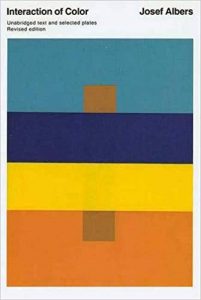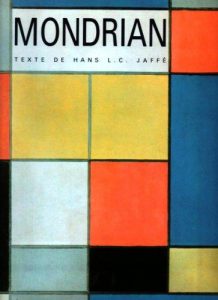
Library staff’s favorite books that we’re sure nobody has heard of
1 October 2019
Nobel Prize in Literature
11 October 2019The Library is pleased to present the Culture Picks for the month of October, curated, researched and written by volunteer Mike Duffy.
As always, we’ve selected books from our collection to go with the cultural visits. These books are displayed in the Members’ Lounge and available to be checked out.
Guest blogger: Mike Duffy lives in Paris following his retirement from a career in university teaching and management. He spent his first 30 years in Pennsylvania (born in Pittsburgh, college and grad school in Philadelphia), then spent a bit more than that in California where he taught accounting and finance at the Universities of California (Berkeley), Southern California and San Francisco. He can now be found in art museums, historic sites, and concert halls throughout the city.
THE FIGURATIVE MONDRIAN
MUSEE MARMOTTAN
Through 6 November 2019
Before those wonderful black grids populated by bright primary colors, before the works that have become instantly recognizable, before the design Yves Saint-Laurent put on a dress, before all those iconic images, Piet Mondrian created interesting, even exciting, works in the course of his intertwined intellectual, spiritual and artistic development. That early development, if up to age 50 can be called early, can be traced through the excellent exhibition of 60 relatively unknown paintings and drawings, all purchased by Mondrian’s earliest supporter, at the Musée Marmottan Monet.
After a start with very traditional Dutch landscapes, still lifes and domestic buildings (described by one critic as “not very promising”), Piet Mondrian (1872-1944) followed the trends that attracted the younger set of Dutch painters from Impressionism through Post- Impressionism, Fauvism, Pointillism — that is from dark, moody, realistic pictures to those with bright, vibrant colors which were recognizable but not realistic. He first adapted the Netherlandish tradition of presenting the flat countryside, ever present water and modest structures to the mysterious, vaguely religious, sometimes gloomy, sometimes mystical style of the late 19th Century in rather somber works such as Ferme à Duivendrecht (Farm at Duivendrecht) (around 1905) and in images of tall, straight trees reflected in water. Just two years later, Mondrian painted two of favorite subjects — the countryside and a windmill, one filled with pinks, the other with yellows, blues and greens, the watery reflections now more fields of light color than detailed scenery. Mondrian gradually lost interest in details, in realistic presentation. In part, this was under the influence of contemporary artistic trends brought from Paris by one of his colleagues (including an introduction to the work of van Gogh), but it also reflects his acceptance of a system of beliefs which emphasized the presence of a background reality which made the apparent details of objects and nature less important. Nothing in his prior work, however, prepares you for the Bois près d’Oele (Woods near Oele) (1908). Mondrian fully adopted the style of the Fauves (wild beasts) of French art who used colors without regard to their correspondence to nature. On this large canvas (more than 4’ by 5’), the trees are red- orange and green and purple and blue, and the ground is made up of long brush strokes of yellow, orange, light and dark blue while the light yellow sun breaks through. The next year he experimented further with short brushstrokes and broken dabs of paint in four highly stylized works named Dunes which reflect the influence of the developing sciences of vision and perception on early 20th Century artists who sought to create the tiny dots, pixels, which the eye combines to create images.
Just as you can trace Mondrian’s adoption of different styles of painting through the trees and landscapes in this exhibition, you can follow the development of windmills from an early dark presentation to the stunning, bright Moulin dans la clarté du soleil (Mill in sunlight) (1908). Here are explosive reds, yellows, blues with bits of orange, green, white and gray, with short, seemingly rapid brushstrokes, paint appearing to ooze or drip across the canvas. No wonder this period of his work is called luminous. Then, in the 1911 Moulin (Mill), there is the bold geometry of a windmill presented only in red and blue, a dominant, single presence, a silhouette bereft of details, unmistakable but not realistic, amazing and perhaps challenging accepted notions of representation. In this work and in his 1917 Moulin à vent le soir (Windmill in the evening) details disappear and what remains are stark shapes, outlines, powerful contrasts.
Recognized as an “outstanding new generation artist” at age 37, Mondrian aligned himself with Theosophy, a spiritual / philosophical movement which preaches pantheism and a Platonic view of the world (what we see are just shadows of reality), broke with traditional Christianity, and three years later took off for Paris, changed the spelling of his name from Mondriaan to Mondrian, tried out Cubism and launched himself clearly as an abstract artist. Powerfully influenced by the giants of Cubism— Picasso, Braque and Léger— Mondrian painted his favorite trees, for example, as fractured planes of only grays and browns, but by 1914 there are paintings titled only Composition, no longer a title indicating that the work represents a scene or a tree or anything directly observable. Up until now, he was a figurative painter, early on in somber, more or less realistic portrayals of landscapes and buildings; later, in faddish bright colors, but still windmills, people, churches; the Cubist paintings, too, are of a woman or a tree. With Composition, that figuration disappears. Before and during the First World War, Mondrian aligned himself with De Stijl, a group of Dutch architects and artists who were resolutely modern and used straight lines, right angles and very few colors, and, although he split with them, he continued in this vein throughout his remaining years. For Mondrian philosophically, intellectually and artistically, the result of following Theosophy’s ideas and De Stijl’s theories and aesthetics was that art must lead people to understand that there is a universal, underlying harmony to the world and that the order and structure of straight lines and right angles best present that harmony which is, in fact, reality. This led him to believe that abstract painting was the only objective art as it looks beyond the superficial characteristics of things to present the deeply real. It is the concept, the idea, what in his mind is reality that matters in art. He was objectively painting nature, the true underlying harmonic nature, neither presenting the particular appearance of any one thing nor expressing his emotions.
Piet Mondrian, supremely and nearly exclusively focused on his art throughout his life, had as a motto “Always forward” indicating his desire to move toward something, eventually toward an idea or concept which he believed to be reality. His work developed from the first painting in this exhibition, the perfectly traditional, perfectly detailed and realistic Lièvre Mort (Dead Hare) (1891) to the final piece shown, the perfectly Modern, perfectly harmonious, perfectly abstract Composition with Large Red Plane, yellow, black, gray and blue (1921). This outstanding exhibition showcases that “always forward” movement as Mondrian developed from a figurative painter to one of the 20th Century’s greatest abstract artists.
Recommended books from the Library collection:








